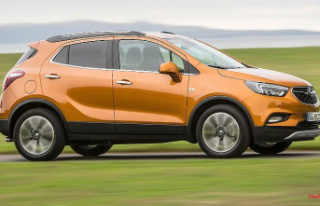With electricity meters, you can easily find out what the greediest energy guzzlers are in the household. Stiftung Warentest tests 15 smart and simple socket monitors, most of which are very good or good - even a device that costs less than ten euros.
How much power does your TV actually draw in standby mode? How much does it cost you for the coffee maker that stays on between cups? In times of immense energy prices, it is good to know how much you use and which devices you might be more likely to turn off. Current measuring devices provide these values.
Stiftung Warentest has tested 15 models and is convinced by the vast majority of the devices. The examiners awarded the grade "very good" once, "good" ten times, including the cheapest device in the test, which costs only nine euros.
And the price of many devices quickly pays off if you deal with the measured values, according to the product testers. Your example: A kitchen radio (5 watts) and a stereo system (10 watts) in standby mode together cause electricity costs of around 45 euros per year (0.34 euros per kilowatt hour).
However, these are obviously very old devices. Because according to the EU Ecodesign Directive, which has been in force since 2013, radio, television
Nevertheless, devices in standby can be expensive: According to co2online, it is around 8 percent or around 360 kWh per year in a three-person household on average. This corresponds to a savings potential of around 130 euros.
Measuring devices that not only indicate the consumption but also calculate the expenditure in euros can be good for understanding. You don't have to worry about the information on the packaging of some devices that they are not designed for measuring low power. In practice, this is "not a big problem," says the test report. According to Stiftung Warentest, standby values below 0.5 watts are of little consequence. And when it comes to measuring power above 2 watts, most devices are good to very good.
The current measuring devices are installed between the plug of the device and the socket - they are a kind of intermediate socket. Conventional models can only measure power consumption. There are also smart sockets that can be controlled remotely using a smartphone app or computer. The current measurement is actually just an extra for them.
Since the networked devices are expensive, it is hardly worth buying them just to measure electricity. There may also be technical requirements for their operation, such as a router from the provider or an app for a specific operating system. Test winner AVM Fritz!Dect 200 (grade 1.5 / 78.50 euros), for example, only works with a Fritzbox router from the manufacturer.
Of the classic power meters, the NZR Standby Energy Monitor SEM 16 USB (grade 1.7) performed best, although it is extremely expensive at 193 euros. The REV energy measuring device Control Line, which costs 17 euros, achieved the same overall grade with only slightly less precise measured values. The cheapest good electricity meter is the digital energy cost meter from Revolt (grade 1.5), which you can get for less than 10 euros.












